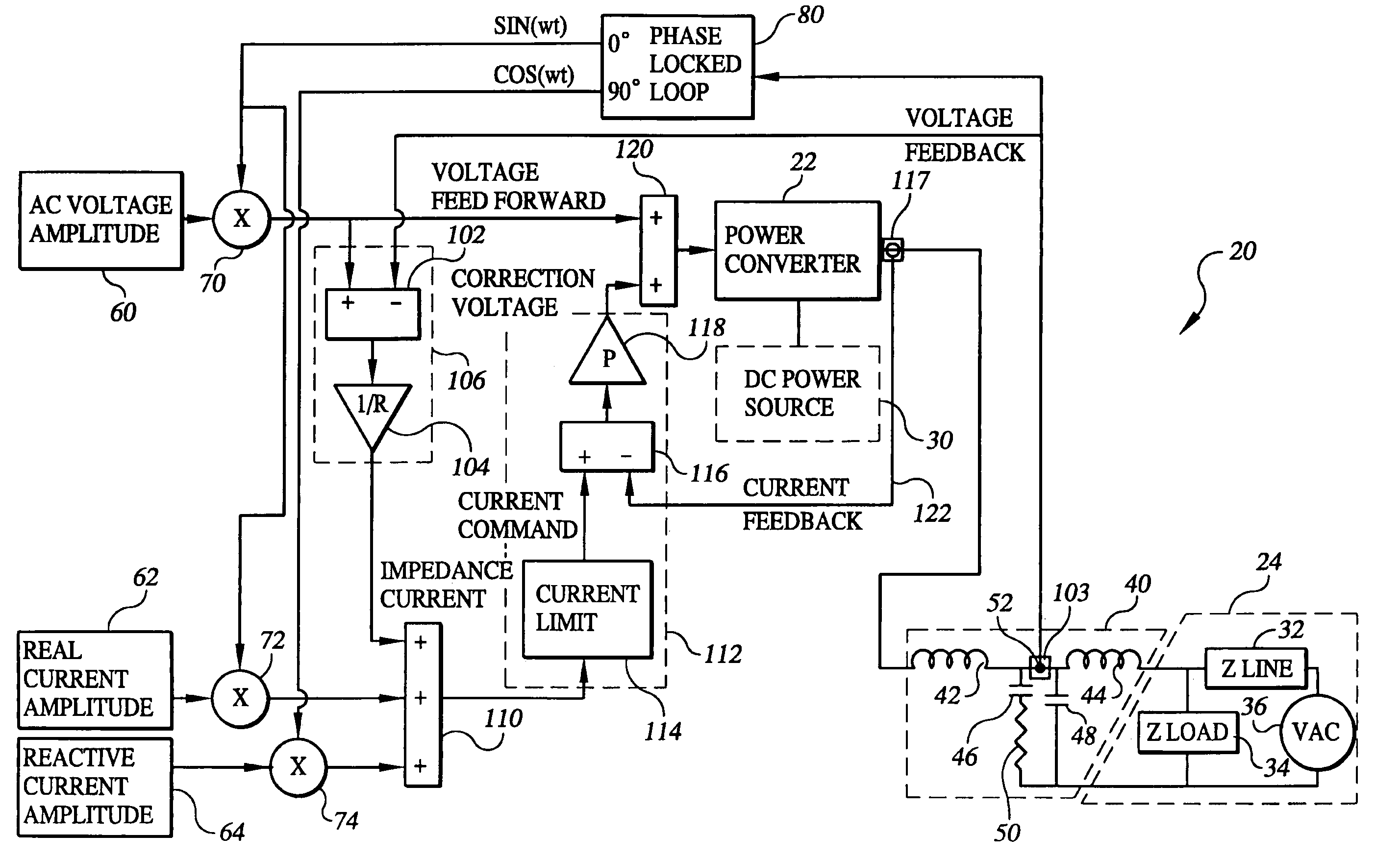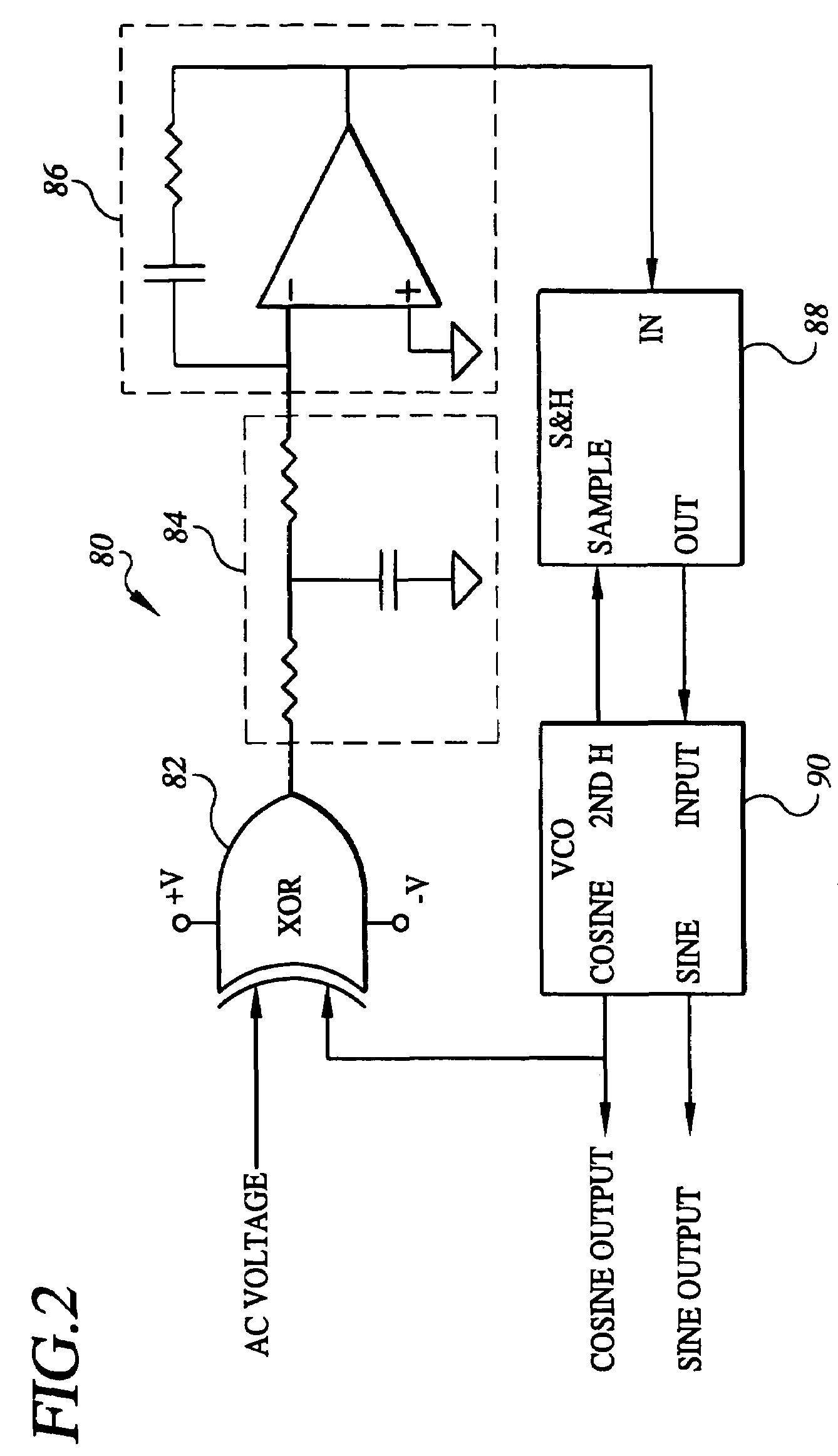Parallel-connected inverters with separate controllers having impedance current regulators
a technology of impedance current regulator and parallel connection inverter, which is applied in the direction of emergency power supply arrangement, reactive power compensation, instruments, etc., can solve the problems of loss of load, problems that can arise, and the control system is not generally applicable to large or dispersed systems
- Summary
- Abstract
- Description
- Claims
- Application Information
AI Technical Summary
Benefits of technology
Problems solved by technology
Method used
Image
Examples
Embodiment Construction
[0029]Referring to FIG. 1, the present invention is a system 20 designed for connecting a power converter 22 to an AC power network 24, and for controlling the power converter. The invention makes it possible to connect any number of power converter's 22 in parallel to the same AC power network 24 without the need for a separate control system connected to the multiple power converters 22. AC power network 24 can be a conventional utility grid or an isolated power network. System 20 works for both single and three-phase systems.
[0030]System 20 is connected between a DC power source 30, such as a battery, flywheel, photovoltaic panel, or fuel cell, and AC power network 24. In particular, DC power source 30 is connected so that the power it generates is provided to power converter 22.
[0031]Power converter 22 may comprise any conventional converter for converting DC power to AC power, e.g., converters of the type described in U.S. Pat. Nos. 2,821,639 and 5,191,519, which are incorporat...
PUM
 Login to View More
Login to View More Abstract
Description
Claims
Application Information
 Login to View More
Login to View More - R&D
- Intellectual Property
- Life Sciences
- Materials
- Tech Scout
- Unparalleled Data Quality
- Higher Quality Content
- 60% Fewer Hallucinations
Browse by: Latest US Patents, China's latest patents, Technical Efficacy Thesaurus, Application Domain, Technology Topic, Popular Technical Reports.
© 2025 PatSnap. All rights reserved.Legal|Privacy policy|Modern Slavery Act Transparency Statement|Sitemap|About US| Contact US: help@patsnap.com



